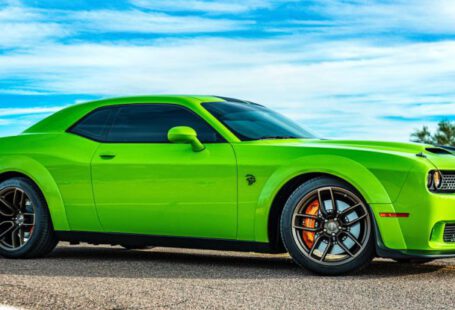The Ford Mustang: A Cultural Icon on Screen and in Print
For over half a century, the Ford Mustang has been an enduring symbol of American muscle and automotive excellence. Since its debut in 1964, this iconic vehicle has not only captured the hearts of car enthusiasts but has also made its mark in popular media, becoming a cultural touchstone that transcends its status as a mere car. From blockbuster movies to bestselling novels, the Mustang has been portrayed in various forms across different mediums, solidifying its place as an emblem of freedom, power, and the American spirit.
The Mustang in Film: A Star on the Silver Screen
When it comes to the portrayal of the Ford Mustang in popular media, perhaps no medium has embraced the iconic car more than film. Over the years, the Mustang has made numerous appearances on the silver screen, often stealing the show with its sleek design and powerful performance. From the high-speed chases in “Bullitt” to the adrenaline-fueled races in “Gone in 60 Seconds,” the Mustang has been featured in some of the most memorable car-centric scenes in cinematic history. Its presence on screen not only adds excitement to the action but also serves as a visual representation of freedom, rebellion, and the allure of the open road.
Literary Depictions: The Mustang in Print
In addition to its on-screen presence, the Ford Mustang has also been prominently featured in literature, where it has been portrayed as a symbol of aspiration, desire, and the pursuit of the American Dream. In novels such as “The Outsiders” by S.E. Hinton and “The Mustang Man” by Louis L’Amour, the Mustang is often used as a metaphor for independence and self-reliance, reflecting the rugged individualism that is deeply ingrained in American culture. Through these written works, the Mustang transcends its physical form and becomes a powerful symbol of personal freedom and the longing for adventure.
The Mustang in Advertising: Selling a Lifestyle
Beyond its appearances in film and literature, the Ford Mustang has also been a popular choice for advertisers looking to evoke a sense of nostalgia, excitement, and freedom. In countless commercials and print ads, the Mustang is often depicted as more than just a car—it is portrayed as a lifestyle choice, a symbol of status, and a reflection of the driver’s personality. Whether it’s cruising down a winding road with the top down or revving its engine at a stoplight, the Mustang is consistently presented as a vehicle that embodies power, style, and a sense of adventure.
Cultural Impact: The Mustang as a Cultural Icon
Through its portrayal in popular media, the Ford Mustang has become more than just a car—it has evolved into a cultural icon that represents the spirit of America itself. With its distinctive design, powerful performance, and enduring legacy, the Mustang has captured the imagination of generations of car enthusiasts, filmmakers, writers, and advertisers alike. Its iconic status transcends its function as a mode of transportation and has cemented its place in the collective consciousness as a symbol of freedom, individuality, and the enduring appeal of the open road.
In Conclusion: The Everlasting Allure of the Ford Mustang
As we look back on the portrayal of the Ford Mustang in popular media, it becomes clear that this iconic vehicle has left an indelible mark on our cultural landscape. From its thrilling appearances on the silver screen to its symbolic representations in literature and advertising, the Mustang continues to captivate audiences around the world with its timeless appeal and enduring legacy. As a cultural icon that embodies the spirit of freedom, power, and American ingenuity, the Ford Mustang remains a symbol of aspiration and inspiration for generations to come.





